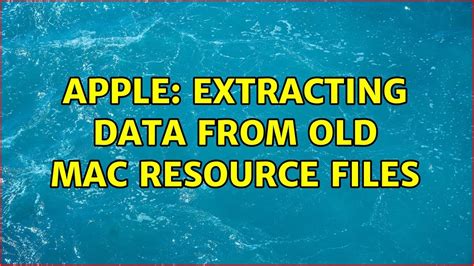The excitement of retro computing often lies in overcoming the limitations of old hardware with modern ingenuity. Recently, an intriguing challenge emerged when an endeavor to extract audio recordings from a 30-year-old Apple laptop was undertaken. This project not only reveals a plethora of technical difficulties but also underscores the enduring creativity that drives the tech community. The primary hurdle in this project was the functionality limitations of the vintage hardware, compounded by an absence of straightforward transfer methods.
The initial approach involved using Optical Character Recognition (OCR) to transcribe data displayed on the old laptop’s screen. While OCR technology has advanced significantly, achieving 100% accuracy with it remains a challenge, especially with non-uniform text like hexadecimal dumps. A commenter suggested that taking a photo and applying OCR might expedite the process, yet this path also struggled with varying character recognition accuracy.
Several community members suggested modifying the OCR’s behavior by switching fonts or employing error-correcting mechanisms. A user mentioned the use of search-and-replace tactics in word processors to substitute problematic characters before OCR processing. Implementing a search-and-replace function through Word to change ambiguous characters to more distinguishable ones like from `0` to `O` and back post-processing would likely improve OCR accuracy, despite increasing preprocessing complexity.
Other intriguing solutions explored involved using historical protocols and hardware peripherals that older systems once relied upon. Serial port communications emerged as a popular suggestion. A practical solution would have been leveraging the modem to establish a serial connection, using protocols such as ZMODEM or XMODEM, which were widely used for file transfers in the pre-internet era. These protocols, coupled with a null-modem cable or a USB-to-serial adapter, could facilitate reliable data transfer between old and new hardware.
The original setup’s reliance on fax transmission underscores the ingenuity and resourcefulness often required in retrocomputing. However, many readers pointed out that mounting the old SCSI drive on a modern system using adaptors would streamline the process. SCSI-to-USB adapters, combined with HFS file system support on Linux or macOS, offer a direct approach. Nonetheless, the adapter and necessary cables’ availability may vary, affecting feasibility.
The project also highlights gaps in modern software’s ability to interact seamlessly with legacy systems. While MacOS and Linux support HFS, extending this compatibility across varied vintage hardware demands niche expertise. Some users nostalgically recalled the use of Zip Drives or external floppies. For PowerBook Duo models, docking stations with Nubus slots facilitating Ethernet or additional storage interfaces were standard accessories, potentially simplifying networking.
Ultimately, the project is a testament to the lengths to which hobbyists and professionals will go—exemplifying both a deep respect for technological heritage and a relentless pursuit of practical solutions. Such endeavors not only preserve data but also spark joy and curiosity about the evolution of personal computing. This fascination keeps the tech community vibrant, continually blending old and new to overcome seemingly insurmountable challenges.


Leave a Reply